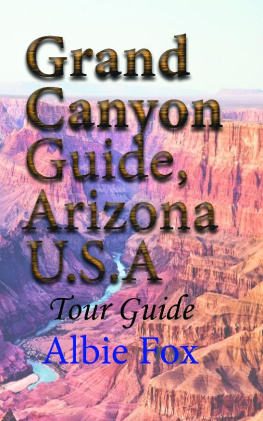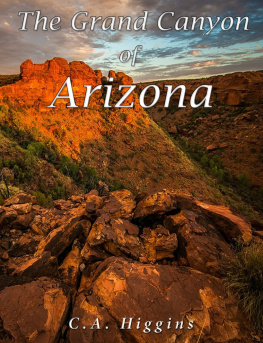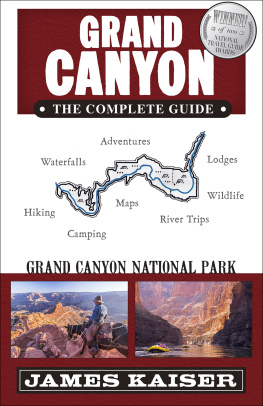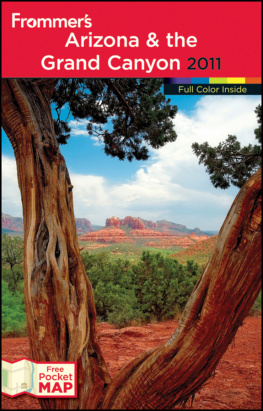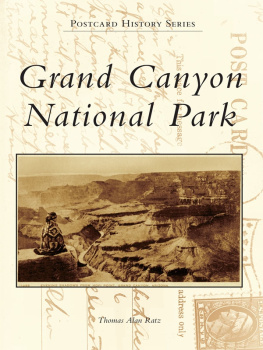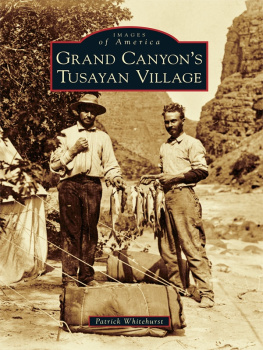Table of Contents
Grand Canyon Guide, Arizona U.S.A
Tour Guide
Author
Albie Fox.
SONITTEC PUBLISHING
All rights reserved. No part of this publication may be reproduced, distributed, or transmitted in any form or by any means, including photocopying, recording, or other electronic or mechanical methods, without the prior written permission of the publisher, except in the case of brief quotations embodied in critical reviews and certain other noncommercial uses permitted by copyright law. For permission requests, write to the publisher, addressed Attention: Permissions Coordinator, at the address below.
Copyright 2019 Sonittec Publishing
All Rights Reserved
First Printed: 2019.
Publisher
SONITTEC LTD
College House, 2nd Floor
17 King Edwards Road
Ruislip, London
HA4 7AE.
Summary
Travel makes one modest. You got to realize that the world is so big and see what a tiny place you occupy in the world.
With people, their culture, thoughts and ideas also travel. When they go from one place to the other, they are bound to meet people and share their thoughts and experiences with them. This is where exchange of ideas takes place, and it definitely broadens a persons outlook. It makes him/her think in a different way, from a different perspective. When we speak of cultural influences and exchange, food is one of the important factors. The food habits of people say a lot of things about them. It is very interesting to discover new and unknown ways and values; they really add spice to life.
Traveling also creates lifelong memories. Whether a person travels solo or with family and friends, the experience definitely gives him/her nice and exciting stories, which he/she can share with people back home. A good long holiday with loved ones enables him/her to spend some quality time with them, which in turn, helps to renew and restore relationships and creates very strong one-to-one and family bonds. In fact, traveling away from home and spending time with near and dear one(s) can give the relationship an entirely new perspective and possibly, people may start understanding each other in a better way.
Above all, traveling and getting away from our homes enables us to spend some time with our own selves. It makes us more sensitive and more tolerant towards others. It makes it easier for us to meet and mingle with different kinds of people, and also teaches us to live life to the fullest
Introduction
The Grand Canyon is more than a great chasm carved over millennia through the rocks of the Colorado Plateau. It is more than an awe-inspiring view. It is more than a pleasuring ground for those who explore the roads, hike the trails, or float the currents of the turbulent Colorado River. This canyon is a gift that transcends what you can experience. Its beauty and size humble us. In its vast spaces you may find solace from your hectic lives. The Grand Canyon you visit today is a gift from past generations.
A powerful and inspiring landscape, the Grand Canyon overwhelms your senses through its immense size; 277 river miles (446km) long, up to 18 miles (29km) wide, and a mile (1.6km) deep. Nearly five million people see the 1 mile deep (1.6 km) Grand Canyon each year. Most of them see it from their car at overlooks along the South Rim (this includes Grand Canyon Village, Hermits Rest, and Desert View). The South Rim is the most accessible part of the park and is open all year.
A much smaller number of people see the Canyon from the North Rim, which lies just 10 miles / 16 km (as the condor flies) directly across the Canyon from the South Rim. The North Rim rises a thousand feet higher than the South Rim, and is much less accessible. Heavy snows close the road to the North Rim from late October to mid May of each year. Even in good weather its harder to get to. It is 220 miles / 354 km by car from the South Rim, or 21 miles / 34 km by foot across the Canyon by way of the North and South Kaibab Trails.
The Inner Canyon includes everything below the rim and is seen mainly by hikers, mule riders, or river runners. There are many opportunities here for adventurous and hardy persons who want to backpack, ride a mule to Phantom Ranch, or take a river trip through the Canyon on the Colorado River (which can take anywhere from a few days to three weeks there are no one-day river trips through Grand Canyon).
History
Well preserved in the folds of the Grand Canyon are cryptic markings, pottery shards and the stone foundations of villages that hint at millennia of human habitation. The Colorado River and its tributaries have long been key sources of life in a largely inhospitable landscape a landscape hotly contested during the westward expansion of the US. Once explorers and prospectors began penetrating the canyons depths, the prescient formation of the park ensured that this landscape would forever remain protected.
Ancient Cultures of the Grand Canyon
Ancient Trails
Ancestral Puebloan occupants of the Grand Canyon established an intricate trail system that provided access all over the region and down to the river. Spurs in every direction linked canyon communities and facilitated trade with cultures throughout the Southwest. Remnants of some paths can be seen in seemingly impossible places, while others improved by prospectors, early entrepreneurs or the National Park Service are still in use.
One of the most striking of these ancient trails is a wooden pole bridge across a gap in the cliffs called Anasazi Bridge, which can be seen on river left, upstream from President Harding Rapid. Experts suspect it may have connected to a rim route via an ascent requiring highly skilled climbing.
The Archaic Periods
Archaeological evidence suggests that humans visited the Grand Canyon region as early as 11,500 BC toward the end of the last ice age. They were likely nomadic, following Pleistocene game animals like mammoth through a changing climate. As the environment warmed creating expanded environmental zones and new opportunities for hunting the descendants of the Paleo-Indians adapted and developed Archaic cultures.
The Early Archaic period, characterized by seasonal habitation, atlatl (spear-throwers), woven sandals and ground stone tools, saw an increase in population on the plateaus despite the drier climate and the loss of large Pleistocene game.
About 6000 years ago, a drought that would last on and off for almost 2000 years defined the Middle Archaic period. Conditions became even tougher, and many peoples migrated to more amenable lands. Those who stayed moved between canyons and plateaus, sometimes camping in caves and leaving evidence of their culture.
As the drought eased, about 4000 years ago (2000 BC), people returned to the region, and the population of the Southwest exploded rapidly into the 1000-year Late Archaic period.
Evidence of this era of occupation found at the Grand Canyon includes dozens of elaborate split-twig animal figurines from four different caves that show no other signs of occupation. A few of these are pierced by small twigs (and one by a cactus thorns) thought to represent arrows, and some were found in shrine-like arrangements. Archaeologists believe that nomadic groups used the caves for hunting rituals, and left these totems as offerings.
Basketmaker & Puebloan Cultures
From 500 AD to 1500 AD, Grand Canyon residents began settling down and experimenting with agriculture during the Formative Period. This more sedentary lifestyle allowed for the development of baskets, pottery and lasting dwellings.
Puebloan culture blurs with the Basketmaker culture (the canyons earliest corn-growing people, named for the intricate coiled and watertight baskets they made), and the gradual shift from one period to the other is a result of complicated migrations and developments. Puebloan culture, as defined and explained by archaeologists, includes corn-growing cultures that inhabited the southern Colorado Plateau and the Four Corners Region. The word pueblo means town and refers to the above-ground adobe or stone structures in which these people lived. Religious ceremonies took place in kivas (circular below-ground buildings reminiscent of pit houses).

